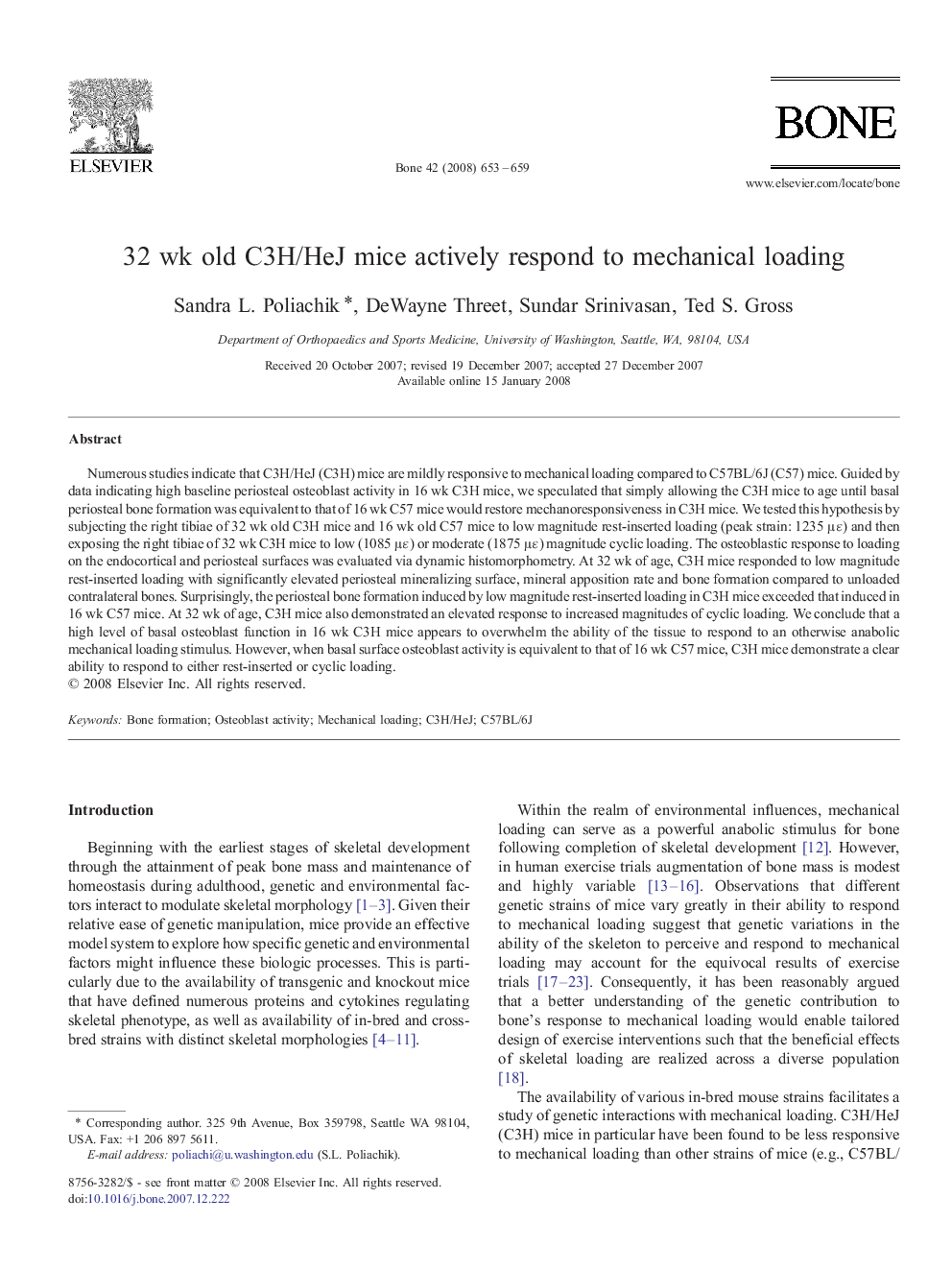| Article ID | Journal | Published Year | Pages | File Type |
|---|---|---|---|---|
| 2781663 | Bone | 2008 | 7 Pages |
Numerous studies indicate that C3H/HeJ (C3H) mice are mildly responsive to mechanical loading compared to C57BL/6J (C57) mice. Guided by data indicating high baseline periosteal osteoblast activity in 16 wk C3H mice, we speculated that simply allowing the C3H mice to age until basal periosteal bone formation was equivalent to that of 16 wk C57 mice would restore mechanoresponsiveness in C3H mice. We tested this hypothesis by subjecting the right tibiae of 32 wk old C3H mice and 16 wk old C57 mice to low magnitude rest-inserted loading (peak strain: 1235 μɛ) and then exposing the right tibiae of 32 wk C3H mice to low (1085 μɛ) or moderate (1875 μɛ) magnitude cyclic loading. The osteoblastic response to loading on the endocortical and periosteal surfaces was evaluated via dynamic histomorphometry. At 32 wk of age, C3H mice responded to low magnitude rest-inserted loading with significantly elevated periosteal mineralizing surface, mineral apposition rate and bone formation compared to unloaded contralateral bones. Surprisingly, the periosteal bone formation induced by low magnitude rest-inserted loading in C3H mice exceeded that induced in 16 wk C57 mice. At 32 wk of age, C3H mice also demonstrated an elevated response to increased magnitudes of cyclic loading. We conclude that a high level of basal osteoblast function in 16 wk C3H mice appears to overwhelm the ability of the tissue to respond to an otherwise anabolic mechanical loading stimulus. However, when basal surface osteoblast activity is equivalent to that of 16 wk C57 mice, C3H mice demonstrate a clear ability to respond to either rest-inserted or cyclic loading.
